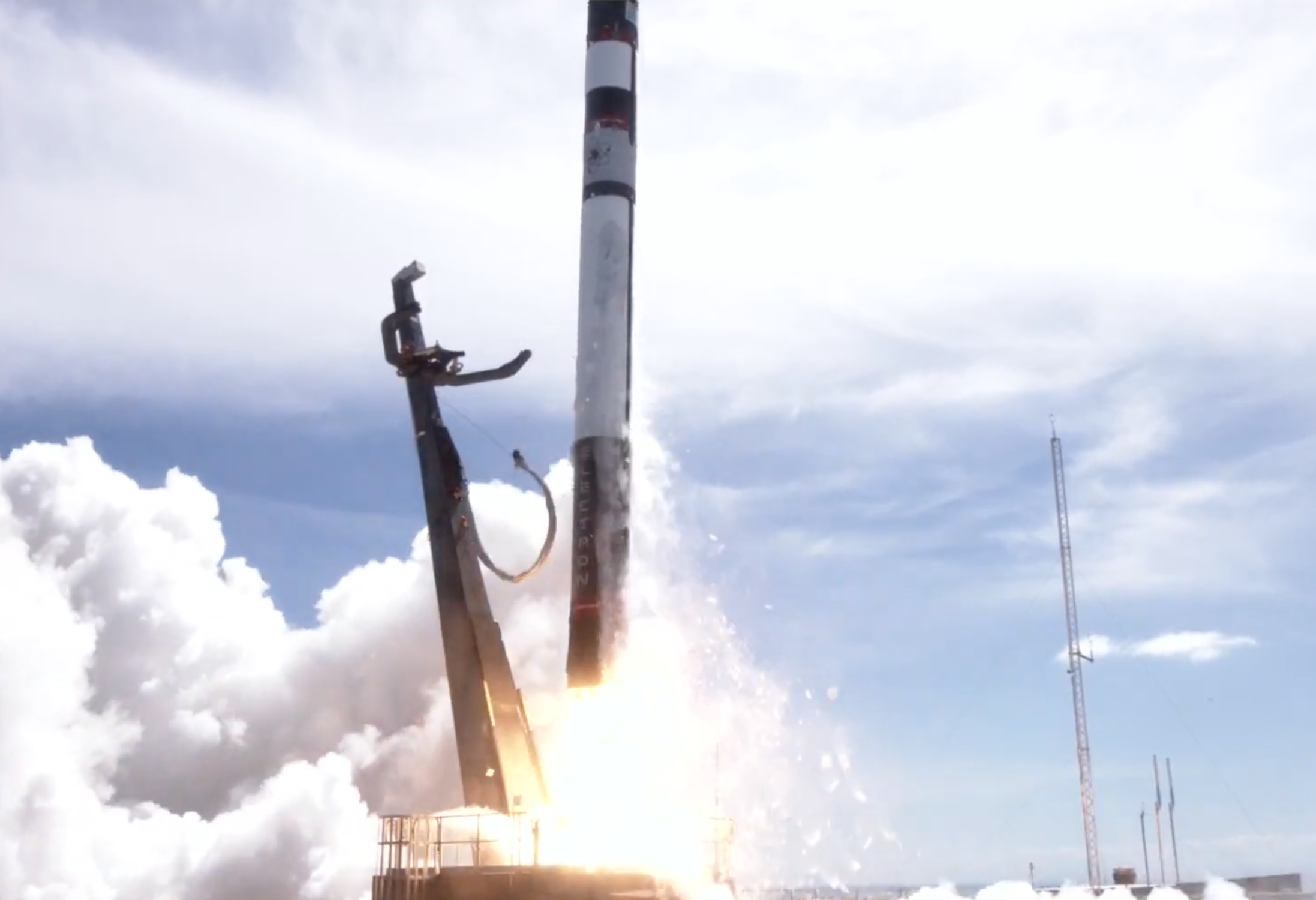The New Zealand-based company is pioneering a new way of reusing rockets that’s distinct from what competitors like SpaceX and Blue Origin have done.

New Zealand company Rocket Lab has hit a key milestone with the successful launch and recovery of its flagship Electron rocket. The mission, the firm’s 16th so far, included a soft parachute landing of the first stage booster into the ocean for the first time.
The mission: Electron was launched around 1:46 a.m. local time this morning from the company’s launch site on the southern tip of New Zealand’s North Island. The mission successfully deployed 30 satellites into low Earth orbit.
After 2 minutes in flight (over 26,000 feet the air), the first stage booster separated from the second stage, flipped around 180 degrees, and deployed a parachute which slowed down its descent and allowed for a soft landing in the Pacific Ocean, after which crews successfully ventured out to recover it. It is the first time the company has ever attempted to recover a rocket booster.
Why it matters: Both SpaceX and Blue Origin have been recovering rocket boosters for years. Their method, however, involves bringing the boosters back down in a vertical landing.
Rocket Lab wants to pioneer a different approach. The goal is to recover the boosters as they fall by capturing them in mid-air with a helicopter. After the booster has deployed its parachute, a helicopter will snag the parachute line before the rocket hits the ocean.
The company demonstrated this in late March, with a helicopter catching a dummy rocket dropped about 5,000 feet above the ocean. Before this, Rocket Lab also successfully demonstrated a guided reentry of the Electron rocket during missions in December and January, proving that the first stage booster could survive reentry through the atmosphere. Friday’s mission shows the company can get the booster back down to Earth in one piece.
Small is better: The company specializes in small payload launches. Its 55-foot-tall Electron rocket is 3D printed–the only rocket of its kind to be flying at the moment. Electron can’t send very heavy satellites into space (Electron is too lightweight), but the rise of small satellites has opened up an enormous market that Rocket Lab wants to capitalize on, especially if the company can pull off frequent flights. Rocket Lab plans to start launching from the US at Wallops Island, Virginia starting next year.
The company also has some deep space ambitions moving forward, including plans to launch a small satellite to Venus in 2023 to study the planet’s atmosphere for possible signs of life.


